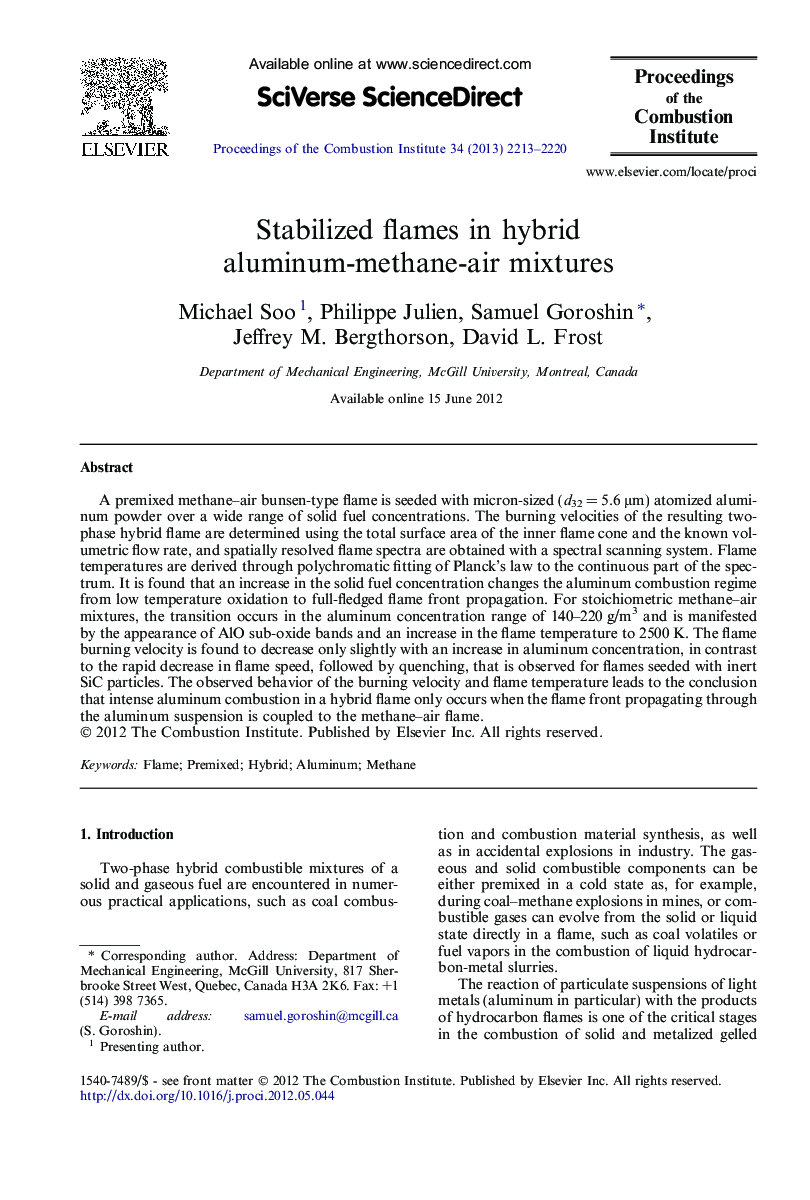| Article ID | Journal | Published Year | Pages | File Type |
|---|---|---|---|---|
| 240845 | Proceedings of the Combustion Institute | 2013 | 8 Pages |
A premixed methane–air bunsen-type flame is seeded with micron-sized (d32 = 5.6 μm) atomized aluminum powder over a wide range of solid fuel concentrations. The burning velocities of the resulting two-phase hybrid flame are determined using the total surface area of the inner flame cone and the known volumetric flow rate, and spatially resolved flame spectra are obtained with a spectral scanning system. Flame temperatures are derived through polychromatic fitting of Planck’s law to the continuous part of the spectrum. It is found that an increase in the solid fuel concentration changes the aluminum combustion regime from low temperature oxidation to full-fledged flame front propagation. For stoichiometric methane–air mixtures, the transition occurs in the aluminum concentration range of 140–220 g/m3 and is manifested by the appearance of AlO sub-oxide bands and an increase in the flame temperature to 2500 K. The flame burning velocity is found to decrease only slightly with an increase in aluminum concentration, in contrast to the rapid decrease in flame speed, followed by quenching, that is observed for flames seeded with inert SiC particles. The observed behavior of the burning velocity and flame temperature leads to the conclusion that intense aluminum combustion in a hybrid flame only occurs when the flame front propagating through the aluminum suspension is coupled to the methane–air flame.
